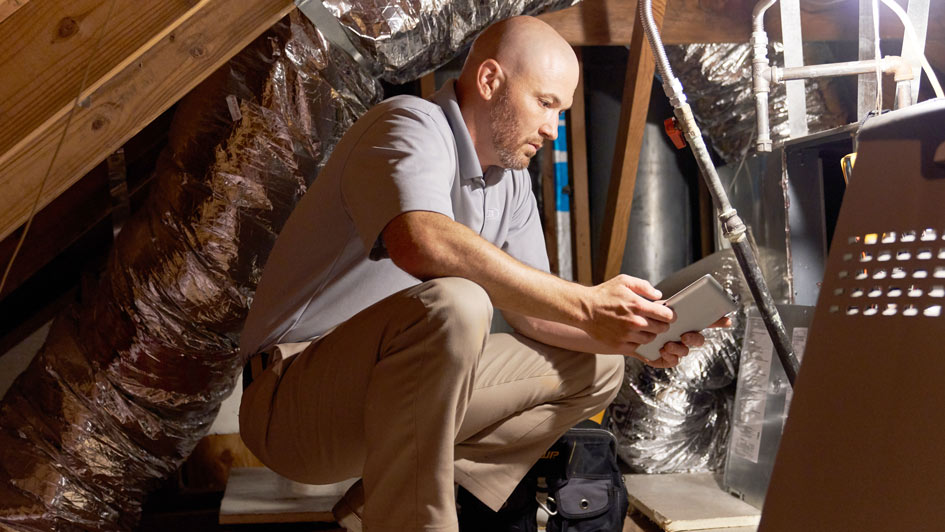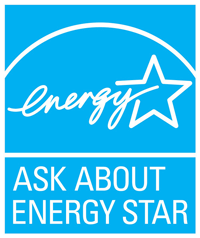
Where you aware that more than 50 percent of your home’s energy costs are from your heating and cooling? This is why it’s critical to maintain an energy-efficient HVAC system.
Furnace efficiency standards were last revised to an Annual Fuel Utilization Efficiency (AFUE) rating of 80% in 2015. This rating system illustrates how effective your furnace is at converting natural gas into heat. An AFUE rating of 80% means your furnace wastes about 20% of the fuel it uses while producing heat.
In 2022, President Biden proposed new energy-efficiency standards for residential gas furnaces that would significantly decrease emissions, save homeowners money and promote sustainability.
The updated standards are projected to:
- Save Americans $1.9 billion annually.
- Reduce carbon emissions by 373 million metric tons and methane emissions by 5.1 million tons over 30 years, the equivalent of what 61 million homes emit each year.
Starting in 2029, the proposed rule would mandate all new gas furnaces to feature AFUE ratings of 95%. This means furnaces would combust nearly 100% of the gas into usable heat.
With these facts in mind, you may be asking yourself "what happens to my existing furnace"? For the time being, very little, as the proposed rule will not go into effect until 2029 at the earliest and will not affect furnaces that are already in use.
But if you are considering furnace replacement in soon, highly energy-efficient furnaces are ready and available. Find out how these furnaces can save you money on your utility bills.
Guide to Condensing Furnaces
How Condensing Furnaces Work
A condensing furnace is a style of heating system that uses a secondary heat exchanger to capture wasted heat from the furnace's exhaust gases. This reduces the quantity of energy wasted, enhances energy efficiency and lowers CO2 emissions. It also requires less natural gas to produce the same rate of heat when compared to other types of furnaces.
How Condensing Furnaces Differ from Non-Condensing Furnaces
The main difference between a condensing furnace and a non-condensing furnace is condensing models use a secondary heat exchanger to capture any wasted heat from its exhaust gases, while the latter does not.
How Long Condensing Furnaces Last
The life span of a condensing furnace depends on the brand, model and other factors. Generally speaking, a condensing furnace is likely to last between 10-20 years with appropriate maintenance and regular service. If you don’t schedule routine maintenance, it may not last as long.
Why Condensing Furnaces Are More Expensive
Typically, condensing furnaces are more cost most to install than non-condensing furnaces. This is due to their increased efficiency and the added components necessary to capture any wasted heat from its exhaust gases. However, the extra energy savings can often offset the cost of purchase. So over time, it may be worth investing in a condensing furnace.
Guide to Variable-Speed Furnaces
Variable-Speed Furnaces: What Are They and How Do They Work?
A variable-speed furnace can more precisely alter its fan speed based on the heating needs of your home. It operates at a slower speed until it senses a drop in temperature and then speeds up to generate more heat. This [precise fan is significantly more efficient than conventional furnaces, as it only consumes the minimum amount of energy necessary to heat your home, saving you money in the long run.
The majority of variable-speed furnaces are condensing furnaces, although a few are available in non-condensing models with lower AFUE ratings. In order for a furnace to be classified as a condensing furnace, it must offer an AFUE rating of 90% or higher.
Do Variable-Speed Furnaces Run Constantly?
A variable-speed furnace doesn’t need to stay on all the time. Alternatively, it runs at different speeds according to the temperature in your Auburn home as well as the amount of energy it uses to reach that temperature.
When sufficient energy is needed to maintain your set temperature level, the furnace will shift to a higher speed to handle the demand. This allows for more efficient heating in your home while also offering quieter operation.
Guide to Two-Stage Furnaces
Two-Stage Furnaces: What They Are and How They Work
A two-stage furnace is a type of heating system that utilizes two different stages of operation — high and low. When set to the low stage, the furnace operates at a reduced capacity to help maintain the chosen temperature at your home more efficiently. During the high stage, the furnace will instead run at maximum capacity to meet demands for increased heat. With a two-stage furnace, you can enjoy enhanced energy efficiency and balanced temperatures throughout your home.
While two-stage furnaces are highly efficient, not all all models are condensing furnaces.
Does a Two-Stage Furnace Run All the Time?
A two-stage furnace should not run constantly. In the low stage of operation, the furnace runs at limited capacity in order to sustain a planned temperature more efficiently within your home. When additional energy is needed to sustain the set temperature, the furnace shifts to its high stage and operates at full capacity. Because of this, two-stage furnaces are able to help reduce energy costs without operating around the clock.
Differences Between Two-Stage and Variable-Speed Furnaces
Two-stage furnaces have two stages of operation, low and high. During the low stage, the furnace works at reduced capacity to help uphold a desired level of comfort within your home. When a greater demand for warmth or cooling is necessary, the furnace will switch to its high stage and operate at maximum capacity.
Variable-speed furnaces, meanwhile, can run at a variety of speeds in order to keep a desired temperature more consistently at home. Such precise functionality can also help reduce energy costs, as it is not constantly running on full power like many two-stage furnaces do.
Differences Between One- and Two-Stage Furnaces
One-stage furnaces have a single stage fan speed and operate either at full capacity or not at all. Consequently, the furnace runs constantly in order to maintain a desired level of comfort at home.
Two-stage furnaces, by comparison, have two stages of operation, low and high. During the low stage, the furnace runs at lower capacity in order to maintain the desired temperature more efficiently. When additional warmth or cooling is necessary, the furnace will switch to its high stage and operate at maximum capacity.
Arrange Your Furnace Install Appointment with Forster Heating Today
It takes experience and dedication to stay up to date about furnace technology advancements. That’s why Forster Heating specialists are here to help with a free, no-pressure estimate for furnace installation. We’ll assess your home, your heating needs and your budget before helping you find the best solution. Call us at 530-885-8081 to get started today!



